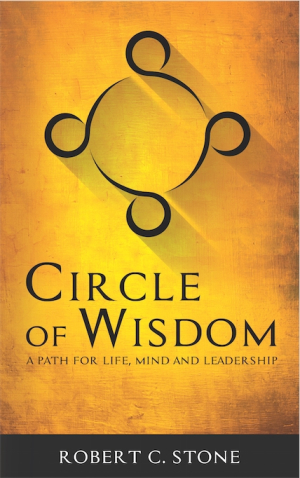Circle of Wisdom
A Path for Life, Mind and Leadership
In the tradition of Animal Farm, Stone takes us on an allegorical excursion into the meaning of cooperation and leadership.
Storytelling has become synonymous with a significant segment of the business book market. With good reason: It often takes a story to convey resonant and memorable points. Delivered in a dry, academic manner, such insights have far less impact. Robert Stone, a physician specializing in psychiatry who has turned his attention to what he calls “wisdom leadership,” is a good storyteller. In Circle of Wisdom, he demonstrates his ability to impart that wisdom through an allegorical tale.
In the tradition of Orwell’s Animal Farm, Stone tells a fanciful story about a farm and its talking animal managers: Ruf, manager of dogs; Nay, manager of goats; and Pek, manager of hens. One day, the farm’s owner, OM, introduces the three managers to a llama named Dal. It quickly becomes apparent to the managers that Dal’s role is to help implement radical change in the way the farm is being operated. Dal’s style, however, is to teach others to rely on themselves to effect change.
The tale itself is cleverly told. The characters are well developed and there are enough twists and turns in the plot to keep the story moving. Obviously, the reader needs to suspend reality and accept the fantasy of talking animals, but as the story progresses, the characters themselves become secondary to the lessons each one learns.
Along the way, much like an Indian guru, Dal conveys deep wisdom about human nature. For example, he counsels, “You can’t expect external change to cause an inner transformation. But you can expect inner transformation to cause plenty of change.” Dal exhorts the managers to be “warrior leaders,” who “look within and stand openly with what is revealed. They find their true experience and their true power at the same time.” It is Dal who ultimately explains the concept of the “circle of wisdom,” which is, in reality, four circles that form a larger circle. “Some people call this a system, and it is,” says Dal, “but it’s really just a way of acknowledging our interdependent connectedness.”
The story Stone weaves is expertly crafted and chock full of memorable pearls of wisdom. The book is a short, easy read, but its underlying message is deserving of much thought. The graphic of the “circle of wisdom” is memorable.
Circle of Wisdom may leave some wanting more direction. It would have been useful had Stone appended a closing chapter of self-guided questions or exercises to help put into practice the tenets of the story. A resources section would also have been of value. Still, Circle of Wisdom is a story simply and elegantly told—with universally applicable, compelling content that should benefit not only business managers, but the general public as well.
Reviewed by
Barry Silverstein
Disclosure: This article is not an endorsement, but a review. The publisher of this book provided free copies of the book and paid a small fee to have their book reviewed by a professional reviewer. Foreword Reviews and Clarion Reviews make no guarantee that the publisher will receive a positive review. Foreword Magazine, Inc. is disclosing this in accordance with the Federal Trade Commission’s 16 CFR, Part 255.

